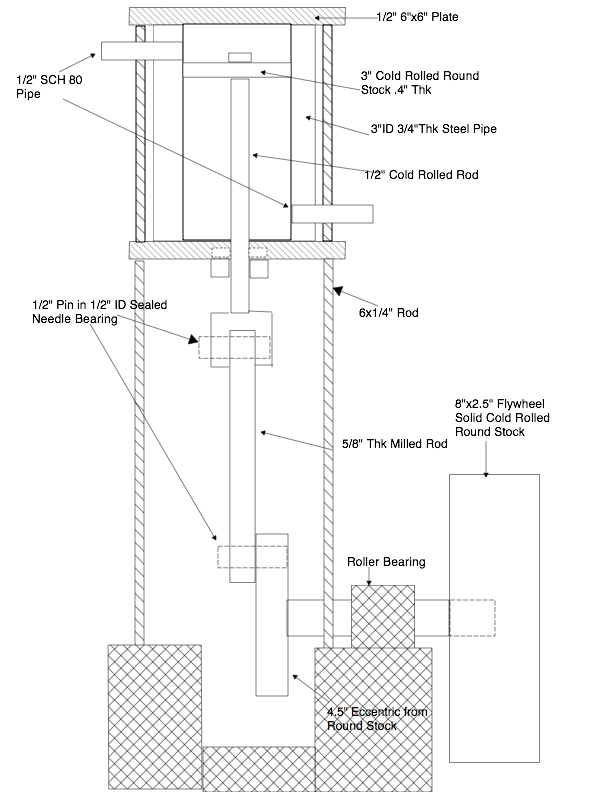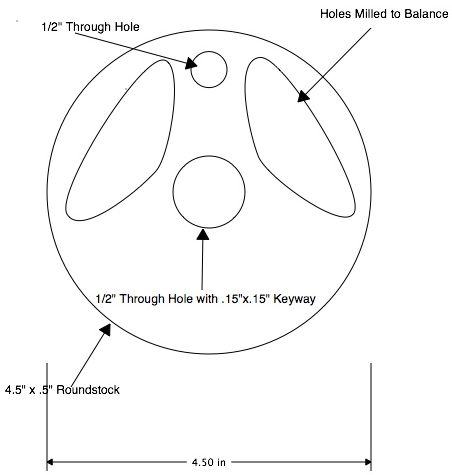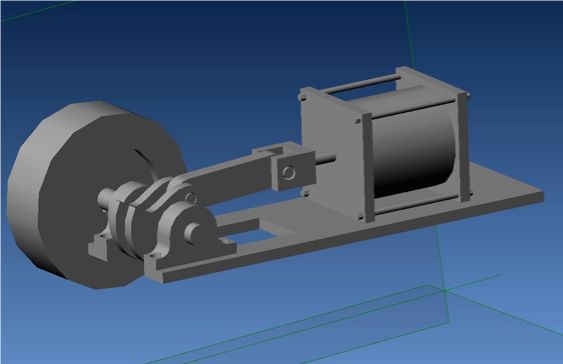Steam Engine Design/2009: Difference between revisions
No edit summary |
No edit summary |
||
| Line 24: | Line 24: | ||
* Valve timing (presumably done via a shaft encoder, etc) | * Valve timing (presumably done via a shaft encoder, etc) | ||
* Starting the engine | * Starting the engine | ||
Steam power engineering is taught by various merchant marine schools and academies around the world. There are hundreds of ships still in service with steam engines and turbines as old as 103 years. I work on one such ship right now. Your design is too complicated: Keep It Simple, See? Research St Mary's Challenger steamship on wiki. The newest engine was made in 1949 and still works fine and is able to compete with brand new diesel tug boats. --Harry Smith | |||
Latest revision as of 20:55, 1 May 2011
Main > Energy > Steam Engine
Design Concept
This design was developed by (???) in January of 2009 (1/9/09).
Crankshaft Eccentric
The piston rod attaches to the crankshaft via an eccentric crank:
3D Model
A conceptual image as of Jan. 19, 2009.
Critique
While this design captures the essentials of a simple unaflow steam engine, it relies on an electronic steam valve (Arduino controlled OS solenoid). Several other problems have come up in recent conversations that this design doesn't address including:
- Piston ring sourcing
- Oiling
- Valve timing (presumably done via a shaft encoder, etc)
- Starting the engine
Steam power engineering is taught by various merchant marine schools and academies around the world. There are hundreds of ships still in service with steam engines and turbines as old as 103 years. I work on one such ship right now. Your design is too complicated: Keep It Simple, See? Research St Mary's Challenger steamship on wiki. The newest engine was made in 1949 and still works fine and is able to compete with brand new diesel tug boats. --Harry Smith


